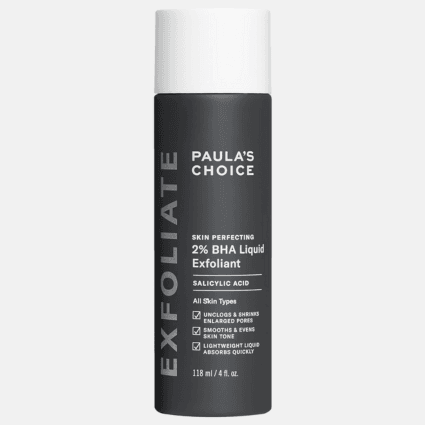Everything You Need To Know About Beta Hydroxy Acids

Beta Hydroxy Acid (BHA) is a type of chemical exfoliant widely used in skincare. The most common form of BHA is salicylic acid, which is derived from willow bark. BHAs are oil-soluble, making them particularly effective at penetrating into oily skin and clogged pores to deliver their benefits.
BHAs are known for their ability to exfoliate the skin, improve texture, and address various skin concerns such as acne, blackheads, and enlarged pores. Their oil-soluble nature sets them apart from Alpha Hydroxy Acids (AHAs), which are water-soluble and work more on the surface of the skin.
Benefits
Effective for:
Acne: BHAs penetrate deep into pores, breaking down sebum and dead skin buildup. This helps reduce acne breakouts and keeps pores clear over time.
Blackheads and Whiteheads: By exfoliating within the pore lining, BHAs help loosen debris that contributes to blackheads and whiteheads, improving overall skin clarity.
Oily Skin: BHAs are excellent at controlling excess oil and refining skin texture, making them ideal for oily skin types.
Additional Benefits:
Fine Lines and Wrinkles: While not as potent as AHAs in reducing wrinkles, BHAs improve skin texture and may soften fine lines with consistent use.
Keratosis Pilaris (KP): BHAs help smooth the rough, bumpy skin caused by KP by exfoliating inside hair follicles.
Brightening Dull Skin: Regular use promotes cell turnover, revealing fresher and brighter skin underneath.
How Beta Hydroxy Acid Works
BHAs work by exfoliating both the surface of the skin and within pores. Here’s how:
Oil Solubility: BHAs dissolve in oil, enabling them to penetrate oily pores and address buildup from within.
Exfoliation: They remove dead skin cells on the surface and inside the pores, reducing clogs and refining texture.
Anti-Inflammatory Properties: Salicylic acid has soothing properties, making it suitable for sensitive or acne-prone skin.
Antimicrobial Effects: BHAs reduce the presence of acne-causing bacteria, contributing to clearer skin.
How to Use Beta Hydroxy Acid
Start Slow:
Begin with a lower concentration (0.5% to 2%) and use it 1-2 times a week.
Gradually increase usage as your skin builds tolerance.
Application Tips:
After cleansing, apply BHA to dry skin using a cotton pad or your fingers.
Follow with a moisturizer to counteract potential dryness.
Sun Protection:
BHAs can make your skin more sensitive to the sun, so always wear sunscreen during the day.
Avoid Overuse:
Do not use other exfoliants or harsh treatments on the same day as your BHA to prevent over-exfoliation.
Popular Products with Beta Hydroxy Acid
Side Effects and Precautions
While BHAs are generally safe, overuse or improper application can cause side effects:
Common Side Effects:
Dryness and Peeling: Excessive use can lead to flaking or irritation, especially for those with sensitive skin.
Redness and Stinging: Mild irritation may occur during the first few applications.
Sun Sensitivity: BHAs increase sensitivity to UV rays, emphasizing the need for daily sunscreen.
Special Precautions:
Pregnancy and Breastfeeding: While salicylic acid is typically safe in low concentrations (<2%), consult a healthcare provider before use.
Dry or Sensitive Skin: Start with a low concentration and use sparingly to avoid irritation.
Aspirin Allergy: Avoid salicylic acid if you have an aspirin allergy, as they share similar chemical properties.
Who Should Use It?
BHAs are suitable for:
Oily and Acne-Prone Skin: Ideal for reducing breakouts and controlling oil.
Combination Skin: Can be used on oily areas, like the T-zone.
Mature Skin: Improves texture and addresses fine lines over time.



